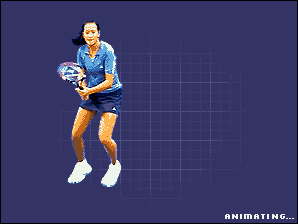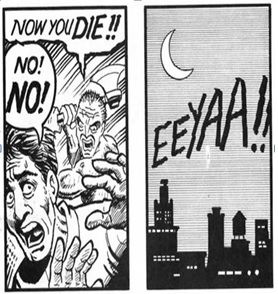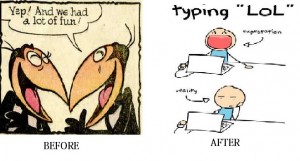What is Network Literacy? Literacy is about having sets of skills to do a particular thing, in this case the ability to network. While a network, according to Castell (2004) is a set of interconnected nodes that has no center and that the current network society is powered by the information and communication technology. An easier way to understand network, is by understanding that the word itself is not only associated with digital technology and computer, and that it is applicable to other things. An example is when Miles (2014) talks about the ecology and how it is form by various animal, plants, microbes, earth, and so on by interconnecting with one another and create a functional system that we called network. It is non-hierarchical and the most importantly, no part is unimportant. This coincides with Watts (2003) theory how relation between the parts is more important than the individual part itself.
A good example to demonstrate relation between parts is through the understanding of gaps in movies and comic strips. Take the image on the side; based on the two images we see, we conclude that in the second picture the guy is dead. How come? The space between the parts is called the “gutter”; it’s a space/limbo that allows the people imagination to form a single meaning (McCloud 1993). By doing that we are able to take the two individual and separate parts together to create some sort of meaning and to evoke emotion (Shield 2011). That’s how powerful relation between parts are.

Tennis Swing Motion from BBC Sports Tennis
To be network literate, is not something that you learned by reading a book. You can only learn it by actually doing it as there is no manual book to help you. This learning-by-doing is also known as experiential learning. Aristotle stated that, “One must learn by doing the thing, for though you think you know it, you have no certainty until you try.” The action of doing is more important than the knowing of information in order to function. There is only one effective way to teach someone how to do anything and that is to let them does it” (Schank et al., 1999). An example that I think best suited for this situation is the blogging activity. Blogging is not something you can master overnight, you need to be patient and consistent to get a hang on it, and it’s like learning tennis where you have to swing a racket for 100 times before it feels comfortable in your hand and that you know 100% you will hit the ball.
To have Network literacy is extremely important, especially as an individual who is born and raised in in the digital era where networking has become a central part of society. The world today is quite judgemental, if you don’t use network or even part of the network, then you are not fully part of the society and this will have devastating effects to your career and social life since it is the current key feature of socializing in this age (Castell 2000, p. 5). Rheingold (2011) mention the difference whether you are network literate or not has a huge impact that can influence how much freedom, wealth, and participation you will have during this century. One example that suite this particular situation, is about copyright and the law surrounding the internet. One must be aware of the laws surrounding the network if one is going to participate in it. At first, I did not know that if you don’t give proper credit to someone, you can be fined. Now that I do know about it, I’m extremely careful about it and as you can see from the every media that I attached to this essay has a credit below them. Now if you are not aware about this, in the future you could get your company in trouble for not crediting properly.
Networking for me is not just about socializing, but also a great way of learning. By being network literate, it enables me to find learning materials on the internet. In this modern age, there are many ways we can learn about something. It is not limited to just reading books or going to the library to chat with a ‘knowledgeable’ person or getting a tutor to teach you. These days through the use of free information that we can find on the net, people can learn things that they want in a quick, simple, and cheap way. For example, on the left is a Youtube video that contain tutorial for leaning ‘Let it Go’ on a violin. Through this I managed to learn the song in 5 minutes and it is so simple because you can just follow them. Networking for me is not just about socializing, but also a great way of learning. By being network literate, it enables me to find learning materials on the internet. In this modern age, there are many ways we can learn about something. It is not limited to just reading books or going to the library to chat with a ‘knowledgeable’ person or getting a tutor to teach you. These days through the use of free information that we can find on the net, people can learn things that they want in a quick, simple, and cheap way.
(Let It Go Violin Tutorial by TheStringsClub)
For example, on the left is a Youtube video that contain tutorial for leaning ‘Let it Go’ on a violin. Through this I managed to learn the song in 5 minutes and it is so simple because you can just follow them. In Indonesia to be literate in network can extremely useful, I did not really realized it until I understand about network literate. In Indonesia, especially in the capital city, the traffic is really bad. When I say bad, it’s like no movement at all! To combat this problem, the government created a website called lewatmana.com (lewatmana=whichway).
(Traffic at MOI from LewatMana)
The website provides an actual live CCTV footage report of roads in Jakarta. However the internet connection in Jakarta is the worst, so it could take a long while for the video to upload and stream. But there is an alternative way that is through people post on the chat box. People give advice on the condition of roads they pass, so that we know which area to avoid and which are is good to go. Can you imagine if you are not network literate?! You are missing huge information and not to mention you will get stuck in an endless traffic.
Our world today is heavily influenced by technology, or as what scholars defined as ‘Technological Determinism’. According to Murphie & Potts (2003) technological determinism, as its name stated, is when a society growth is determined by the growth of technology and that is it the agent of social changes. It usually refers to the present and I could say that we are the living proof of it because our lives now are controlled and affected by our technology to the point that we can’t live without them. Don’t believe me? Here is an example, below is list of ‘before and after’ mobile phones appeared.
1. Before we are fine without having phone BUT now if we forget about it, we panic!
(My reaction when I lose my phone from HotVines)
2. BEFORE We laugh with our friend, NOW we LOL’d with them.
We did not realize the change as it is a gradual change. As future media makers, it is unavoidable that we have to utilize technology to the very utmost since it IS the current trend for people, especially in networking case. Based on the research that I found, the current trend in the internet is videos my generation grew up with video based websites like YouTube. Virtually INSync posted a video about social media and video statistic of 2014. There they said that “In 2014, 90% of web traffic is video based”. Also buyers feels confident in purchasing stuff from the net by watching videos and Marketers admit that their sales increase through the use of video in their campaigns. So in future, when I am going to create a media platform or advertising campaign or anything, video is a must. The logic is actually easy to comprehend as people find it easier to understand by using both of their senses instead of just one and as I demonstrated in this essay, by using video it is easier to prove my point in an interesting and fun way. As the comedian Eddie Izzard say,”People only care mostly on looks, then sounds, and then the content.”
(Clip from Dress to Kill)
We have come to ‘the end’ of this essay because I hit the word limits but even without the word limit, talking about network literacy is like hyperlink where it continues to branches off and there is never an ending for it. My conclusion is that network literacy is extremely important especially right now when our world is literally inside the network and that our lives, social activity, and working is all connected with the network, it is simply something that we cannot ignore. I think it is very important for everyone, not just future media makers, or programmers to realize and to know about Network Literacy and to hone our skills. Why?The answer is because we all depends on it.
REFERENCE LIST:
BBC Sports Tennis, [Image], viewed 24 September 2014, <http://news.bbc.co.uk/sport2/hi/tennis/skills/4230728.stm>.
Castells, M. (eds) 2004, The Network Society: A Cross-Cultural Perspective, Northampton, MA: Edward Elgar. <http://annenberg.usc.edu/Faculty/Communication/~/media/Faculty/Facpdfs/Informationalism%20pdf.ashx>.
Eddie Izzard 1998, ‘Dress to Kill’ [Video], viewed at 5 October 2014.
HotVines 2014, ‘Pretty Much My Exact Reaction Whenever I Lose My Phone – Funny Vines’ [Video], viewed 8 October 2014, 21 March. <https://www.youtube.com/watch?v=U6OQ0aA3Wlo>.
LewatMana 2008, Live Traffic at MOI [Video], viewed 21 October 2014. <http://lewatmana.com/cam/209/moi-kelapa-gading/>
McCloud, S. 1993, ‘Blood in the Gutter’, Understanding Comic: The Invincible Art, Harper Collins. McCloud, S. 1993, Image, viewed 24 September 2014, <http://fychonors.files.wordpress.com/2012/04/mccloudbloodingutter.pdf>.
Miles, A. 2014, 9th Symposium, attended 23rd September 2014.
Rheingold, H. 2011, Network Literacy Part One, video, 13 February, viewed 24 September 2014. <http://www.youtube.com/watch?v=g6UKWozzVRM>
Shield, D. 2011, Reality Hunger: A Manifesto, New York: Vintage. (PDF) Schank, R. C., Berman, T. R. & Macperson, K. A. 1999, ‘Learning by doing’, In C. M. Reigeluth (Ed.), Instructional Design Theories and Models: A New Paradigm of Instructional Theory, Vol. II, pp. 161-181.
TheStringClub, 2014, ‘How to play Let It Go from Frozen on Violin’, Video, viewed 24 September 2014, 6th February. <http://www.youtube.com/watch?v=9QG__z2UhCI>
Virtually INSync 2013, ‘Social Media and Video Statistic for 2014’, viewed 5 October 2014, 16th December.< https://www.youtube.com/watch?v=QfVVfB_UHeA >.
Watts, D.J. 2003, Six Degrees: The Science of a Connected Age. London: Vintage. (PDF)
Weinberger, D. 2002, Small Pieces Loosely Joined: A Unified Theory of the Web. New York: Perseus Books. (PDF)

